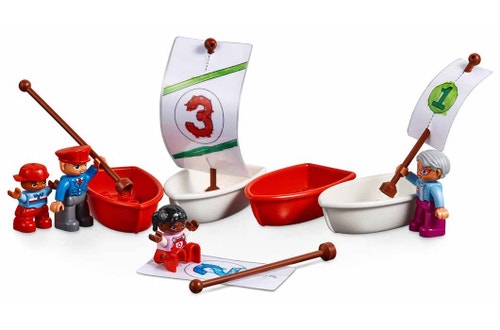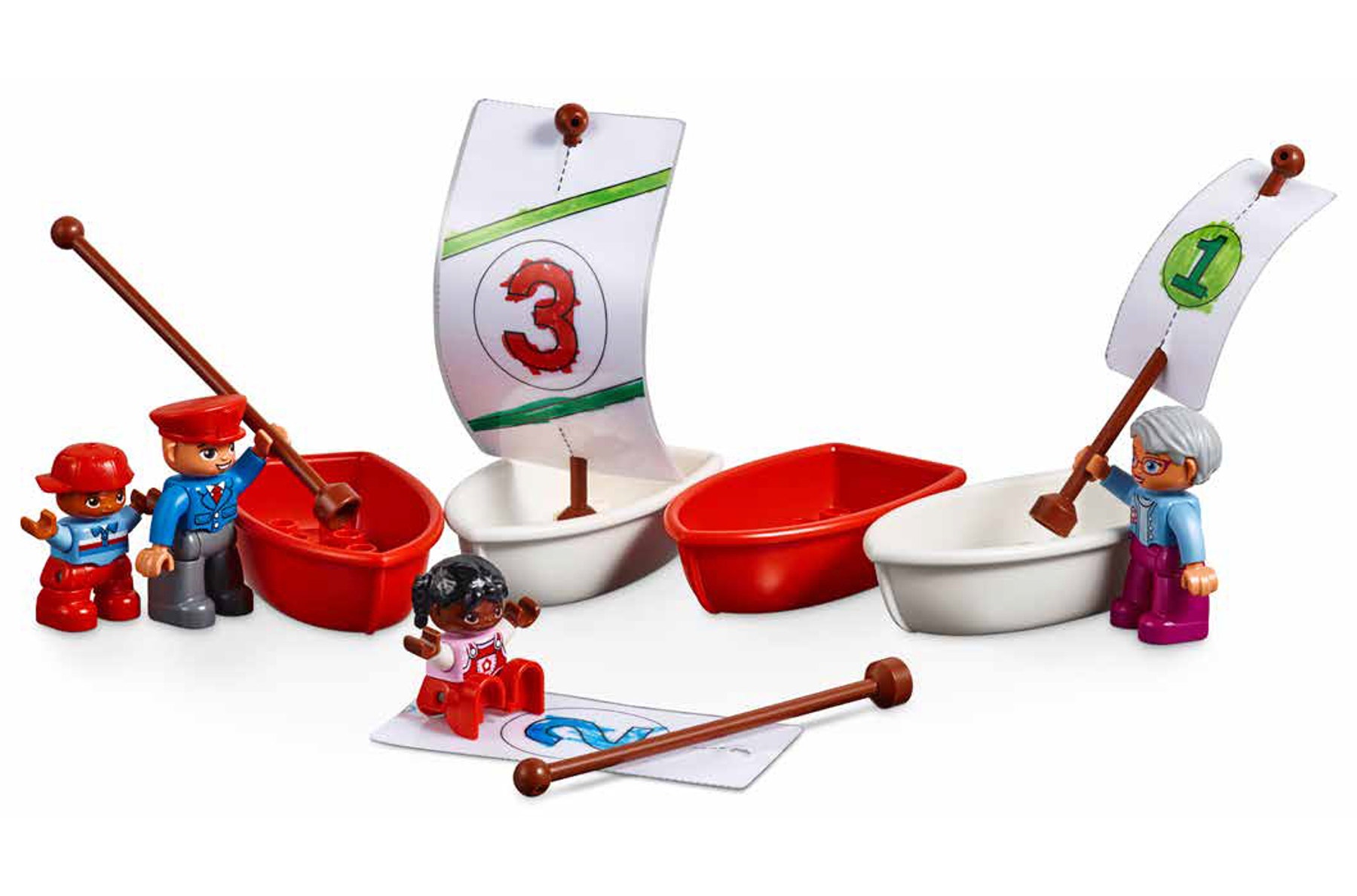Moving on Water
In this lesson, children will learn about how and why things float, and design and test sails.

The Science behind the Play (Notes for Teachers)
Objects that float are positively buoyant and there are several reasons why they float. Objects that are less dense than water will float. Density refers to how close together the molecules of an object are. For example, most rocks sink in water because they are denser than water. Also, the surface (i.e., the outside of an object) that touches the water displaces it, or pushes it out of the way.
The shape of an object also affects how water moves around the object’s surface. For example, the shape of a boat creates a large surface for water to push against. However, if too much weight is added to a boat, it will sink beneath the water.
Some objects are neutrally buoyant. This means that they sink beneath the water’s surface, but they do not sink all the way to the bottom. This happens when an object’s density is the same as the density of the water it is in.
Connect
Tell the children that you will be playing a game called sink or float.
Explain that they will have 10 seconds to choose an item from the room and bring it to you, then set a timer or count to 10 while the children choose their items.
As a group, sort the items into a “sink” pile and a “float” pile, then test the items in a container of water to see if the predictions were correct.
Ask the children to look at the elements in the STEAM Park set and select some they believe will float, then test the items to see if their predictions were correct.
Consider recording the results of the tests on one of the printable graphs.
You might also consider asking questions like:
- What are the characteristics or features of objects that float?
- What are the characteristics or features of objects that sink?
- What would happen if you place an object that sinks on top of an object that floats?
Tell the children that you are going to read the beginning of a story about a group of people who are preparing STEAM Park for its daily visitors. You can show them the inspiration photo or use the figures to act out the story.

Read the following story aloud:
Arty, Teresa, Parker, and Ms. Engels were at STEAM Park early in the morning.
Parker, the park manager, said, “I have four boats that park visitors could ride in. However, we need to find a way to make them move across the water.”
“Do you have some materials we can use to make some sails?” Teresa asked.
“Great idea! What about markers to make colorful designs?” Arty asked.
“Yes, I have a lot of supplies we could use! Let’s get started!” Parker said.
Construct
Encourage the children to think of ways to make boats and other floating objects move across the water.
Show the children the inspiration photo for the “Moving on Water” lesson.
Give the children art supplies and printouts of the sail template, then ask them to create their own sails for the boats and test them.
Consider asking questions like:
- How can you make the boats move without touching them?
- What could we use to make “wind?”
- What would happen if you placed objects in the boat?
- What would happen if you dropped objects in the water around the boat?
Tip:
Laminating the sails will make them stiffer and more durable, and using the boats without the figures makes them more stable.
Contemplate
Prompt a discussion about which sails work the best and why by asking the children to explain what happens when they use a sail to move a boat.
Consider asking questions like:
- Which sail makes the boat move faster?
- What would happen if you moved the sail to a different position?
- How far can you make the boat travel when you blow one breath of air into the sail?
Continue
Play a game using the boats by creating an obstacle course, a relay, or a race.
Place the balls and muffin cup elements in the water and tell the children to navigate around or between the obstacles.
Another idea is to create teams and tell the children to create waves to try to sink the opposing team’s boat.
Did you notice?
Observing the following skills can help you monitor whether the children are developing the necessary competencies in science, technology, engineering, art, and math.
- Asking questions about science and technology related concepts
- Experimenting/testing “what would happen if” questions
- Making predictions
- Sorting and categorizing objects
- Observing and describing what happens
- Recording data using graphs or charts
Öğretmen Desteği
Children will:
- Experiment with the idea of sinking or floating
- Learn which sail design works best for the boats in the set
- Record data using graphs
Scissors
Hole punch
Colored pencils or markers
A large container or sink filled with water
Straws and fans (optional)
Lamination machine (recommended)
Children are able to:
- Ask questions about science and technology related concepts
- Experimenti/test “what would happen if” questions
- Make predictions
- Sort and categorize objects
- Observe and describe what happens
- Record data using graphs or charts